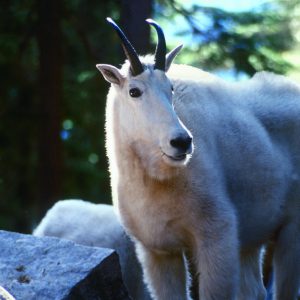Editor’s Note: This post was authored by Camdon Kay. Kay was born in Boise and has been a resident of southern Idaho for his entire life. He recently received his M.S. in biology with a thesis in ecology from Idaho State University.
###
From its headwaters in eastern Idaho and Wyoming, the upper tributaries of the Snake River boast some of the best fishing on the planet. The situation is much different downriver and across the state to the Oregon border. The once-mighty river dwindles to a trickle in places. Hot and full of pollution from agriculture and other industries, the river is plagued by algae outbreaks, killing fish and prompting warnings for humans and their pets to stay out of the water. The Snake River has defined much of the history in the region, and through “Stories of the Snake,” we bring to light the adventures and economic, historical, and cultural values this mighty river has provided for generations, and why stronger protections are needed to keep it this way.
Born and raised in the Treasure Valley, I had the fortune to spend my youth frequenting areas along the Snake River Plain, partaking in the diverse recreational opportunities and unconventional beauty that the sweeping canyons and plains provided. As is the case with many Idahoans, I came to enjoy activities such as camping, hiking, and fishing that are so conveniently accessible in southern Idaho. Early introductions to these diverse and high-quality resources included camping at the Bruneau Sand Dunes and fishing the south fork of the Snake River. As I grew older, I became more and more appreciative and aware of these resources, learning Leave No Trace principles and exploring more and more acres of our public lands.
After graduating high school, I moved to eastern Idaho to attend Idaho State University. While in Pocatello, I had my first exposure to technical rock climbing and also developed a passion for outdoor photography, a pair that complement one another quite well. To my excitement, I learned that opportunities for these two newfound activities were nearly endless in the Snake River Plain. While I had appreciated many other facets of outdoor recreation in this area for my whole life, I was now able to view things through a new lens; there was an abundance of quality rock across the state that I could now see as a personal challenge and athletic pursuit, rather than solely as unique aesthetic and geologic features.
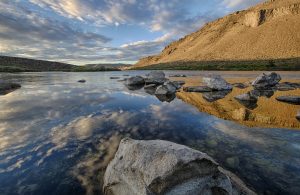
The Morley Nelson Snake River Birds of Prey National Conservation Area is an example of public land along the Snake River that I enjoyed prior to rock climbing, and was able to rediscover after getting involved in the sport. As early as 11 years old, I went on camping trips to Swan Falls, which lies within this conservation area. The boulder-strewn canyon was formed by the Bonneville Flood approximately 14,000 years ago. The steep and rugged canyon walls rise sharply from the floor below, where basalt boulders as big as houses deposited by the flood watch over the meandering Snake River. Upon first visit to the area, it is readily apparent why it’s been frequented by humans for thousands of years. Evidence for the long-term appreciation for the area can be found in the form of petroglyphs on many of the canyon’s boulders, a large proportion of which are protected at Celebration Park, Idaho’s first and only archaeological park.
While many of these boulders do not have petroglyphs, they do provide another opportunity beyond their visual appeal – bouldering.
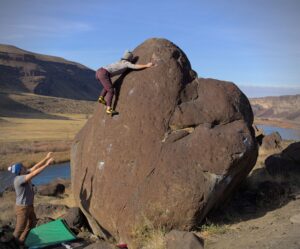
Bouldering is a form of rock climbing that has drastically risen in popularity in recent years. Technical rock climbing originally began as a training tool for mountaineers who recognized that conquering increasingly spectacular and challenging peaks often required skills on vertical rock. At first, the goal was to ascend these rock faces by any means necessary – employing ropes, carabiners, and metal wedges called “pitons” to make progress up vertical fissures in the stone. Eventually, “free climbing” became popular. Rather than using gear (which can damage rock), free climbing focuses on athleticism – requiring one to use only their own power to make upward progress. Free climbing, or “clean climbing,” also puts emphasis on Leave No Trace Principles. As the sport became more popular, climbers realized that boulders often present challenging climbing moves that can help build strength and technique for climbing bigger rock walls, and bouldering became a respected form of climbing.
Bouldering at Swan Falls has likely occurred since the first humans set foot in the canyon. In the late 1990s, local climbers learned of this high-quality training ground less than an hour from Boise – and modern bouldering took off in the area.
The boulders at Swan Falls provide challenging and interesting climbing. The Bonneville Flood waters rounded and polished these basalt monoliths, creating steep, smooth faces of strong rock. This makes for steep, powerful climbing on good holds, a perfect recipe for rock climbers looking for a challenge. One of my favorite things about climbing in this area is the backdrop of the Snake River; these beautiful boulders are scattered along the banks of the Snake, which provides a stunning and relaxing atmosphere while climbing. My appreciation for this area grew immensely as I was able to enjoy the physical and aesthetic bouldering on rocks that I once looked up at in awe as a child.
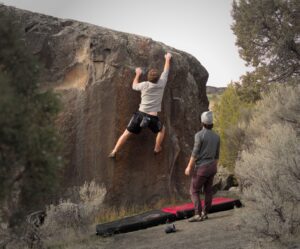
Bouldering is not the only form of rock climbing that is well represented in the Snake River Plain. The many cliffs that border the river also provide ample opportunity for taller, roped rock climbs.
Basalt is the dominant rock type in the Snake River Plain and is a product of the volcanic activity in the area, largely due to the movement of the North American Plate over the Yellowstone Hotspot. For millions of years, lava flows have been deposited in southern Idaho, eventually leading to the formation of many of the basalt cliffs we see today. From the columnar rock of the Black Cliffs near Boise, to the steep and overhung faces of Dierkes Lake near Twin Falls, to the blocky and roof-rich climbing at Teddy Bear Cove near American Falls – basalt rock makes for diverse wall climbing in Idaho. Being able to enjoy climbing in these varied and exciting areas year-round is an absolute treat. Even as we ease further into winter, the dark brown and black basalt rock create microclimates that allow climbers to head out on sunny winter days for a climb.

Some of my favorite days climbing on this basalt have been at the Black Cliffs near Boise. This rock lines the sides of the Boise River, a major regional tributary of the Snake. These cliffs are composed of columnar basalt – rock that forms hexagonal columns. As a result, the climbing here is quite diverse. The cracks in between the columns provide ample opportunity for traditional or “trad” climbing, a form of roped climbing where the climber places removable pieces of gear into the cracks to protect them in case they fall. Staggered columns form chimneys, areas between rock where a climber can wedge their entire body into the space and make upward progress through techniques like “stemming” or “bridging,” much like you might picture Santa Claus shimmying back up your chimney on Christmas Eve. On the outsides of the columns one can find sport climbs, or roped climbs where bolts are placed into the rock at regular intervals where cracks are not present so climbers can clip themselves in via the rope and protect themselves from falls. These climbs utilize pushing and pulling on features on the outside of the rock to reach the top of the cliff. My friends and I have spent many warm days, even in winter months, climbing all kinds of fun routes at the Black Cliffs, and then making the short 10 minute drive into Boise to enjoy the vibrant culture of the “big city.”
The Snake River isn’t just for climbers. It also hosts multi-sport days where you can fish, climb, and swim out of one parking lot. Dierkes Lake near Twin Falls is a perfect example of this. There is obvious climbing to be had in the park, but one can also fish for bluegill and trout, swim and jump from the docks and diving board at the lake, host a family BBQ in the park, and enjoy the powerful and scenic Shoshone Falls… opportunities for recreation in the Snake River Plain abound.
As an ecologist, I also recognize the brilliant biodiversity of the Snake River Plain. While rock climbing, encounters with diverse species are a given. When I climb, I’m sure to look for some of my favorite species native to the area, such as the common side-blotched lizard, arrowleaf balsamroot, and the rubber boa. These are just a few of the many interesting plants and animals that call the Snake River Plain home.
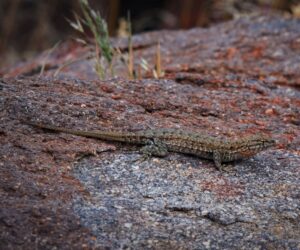
My combination of recreational experiences and natural resources education has driven me to become an active advocate on a wide array of issues in Idaho, but threats to Idaho’s Mid-Snake hit particularly close to home. As I have spent years enjoying the bounty of this landscape, I have also learned how fragile it is – and I see how the Snake is in trouble. Some stretches are so polluted that it is unsafe to recreate in or eat fish from. Decades of putting the industrial and agricultural uses of the river first have led to increased outbreaks of toxic algae and other water quality issues.
In order for future generations to be able to enjoy the Snake River and the surrounding land like we do, we must clean up the Mid-Snake. That means uniting to safeguard the river, hold polluters accountable, and promote efficient water use practices. Coming together through our shared experiences, we can find solutions for conservation that work well for all interest groups, and restore the Snake to a safe, swimmable, fishable condition, protecting this special place and the experiences it holds for now and for the future.
Regardless of how you like to recreate, or how you connect with the Snake River, there are so many reasons to protect it! Take action for the Snake River today by contacting Idaho’s elected officials, urging them to clean up the Mid-Snake. Sign up here to learn more about the Snake River and how you can help restore it, and take action for the Snake River below!

